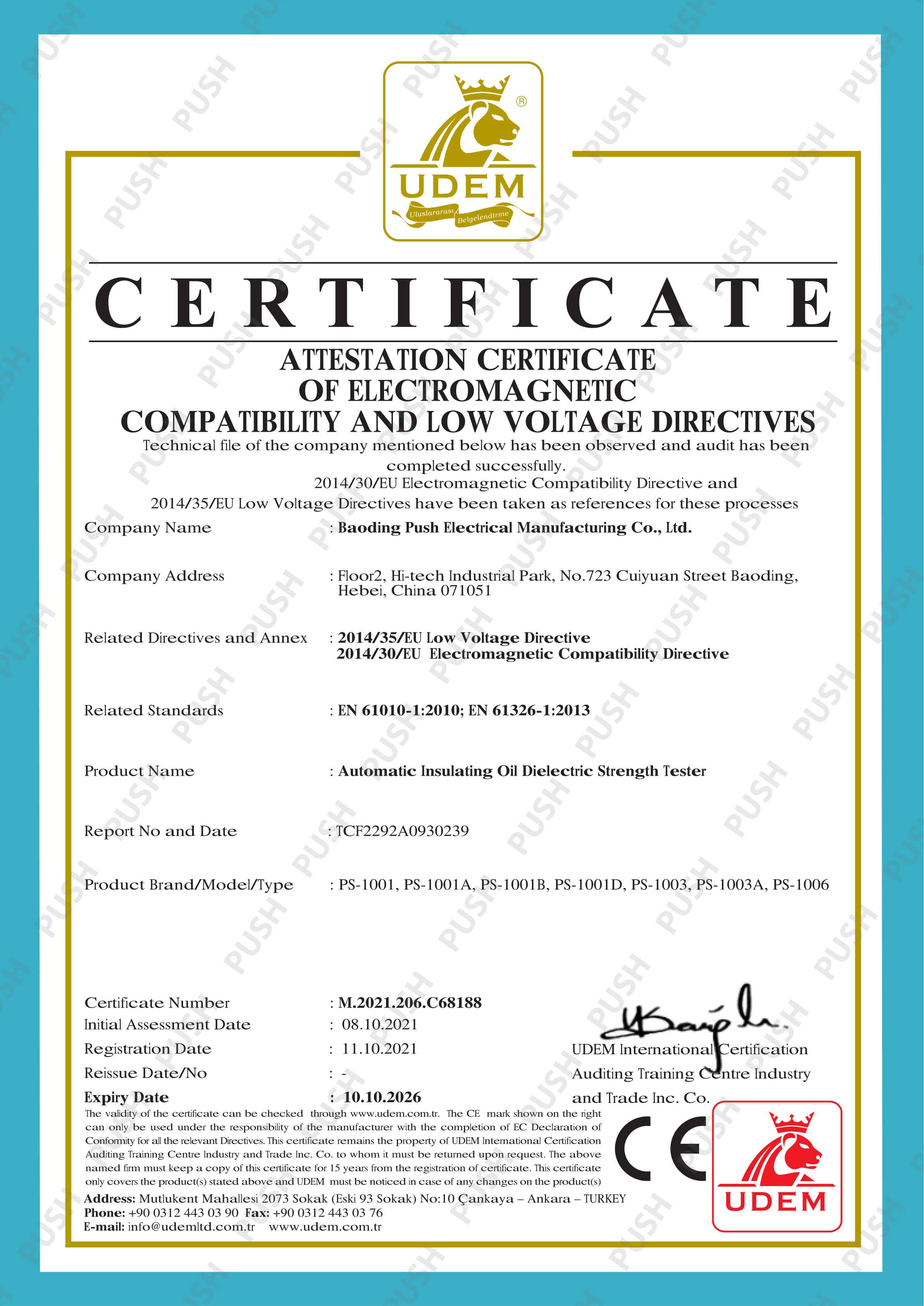 English
English


Power Transformer Oil Analysis Techniques for Enhanced Performance and Reliability
The Importance of Power Transformer Oil Testing
Power transformers are critical components in electrical power systems, functioning as the backbone of energy distribution. To ensure their reliability and longevity, maintaining the integrity of transformer oil is essential. Transformer oil serves several key functions it acts as an insulator, cools the transformer, and protects the internal components from oxidation and moisture. However, over time, the oil can degrade due to various factors, necessitating regular testing to assess its condition.
The Role of Transformer Oil
Transformer oil is typically mineral-based, but there are also synthetic alternatives available. The oil not only insulates the electrical components but also dissipates heat generated during operation. As transformers experience electrical and thermal stress, the oil can undergo chemical changes that might compromise its performance, leading to potential failures. Therefore, monitoring the oil's condition is crucial for the safe and efficient operation of power transformers.
Importance of Oil Testing
Oil testing is a vital process to determine the health and performance of transformer oil. It involves a series of assessments aimed at identifying potential issues before they escalate into significant problems. Regular oil testing helps in
1. Detecting Contaminants Over time, a transformer can accumulate moisture, dirt, and other contaminants that can adversely affect the oil's properties. Testing helps identify these contaminants, allowing operators to take corrective measures.
2. Evaluating Degradation Transformer oil can degrade due to oxidation and thermal stress, leading to the formation of sludge and acids. Regular analysis determines the degree of degradation, which is crucial in making informed decisions about maintenance or replacement.
3. Monitoring Dissolved Gases The presence of dissolved gases in transformer oil can indicate internal arcing or overheating—a sign of potential failure. Techniques like gas chromatography can be employed to analyze these gases, helping to predict and prevent transformer failures.
4. Assessing Electrical Properties The dielectric strength, or insulation capability, of transformer oil must be maintained to prevent electrical breakdown. Testing the oil’s dielectric strength regularly ensures it meets the required standards for safe operation.
Common Testing Methods
power transformer oil testing pdf

Several standard tests are commonly performed in transformer oil testing. These include
- Interfacial Tension (IFT) This test measures the oil's ability to separate from water, indicating its level of contamination and degradation.
- Dissolved Gas Analysis (DGA) DGA identifies and quantifies gases dissolved in the oil, providing insights into potential issues within the transformer.
- Water Content Test Moisture is one of the chief contaminants in transformer oil. Techniques such as the Karl Fischer titration method are employed to measure the oil's water content.
- Furan Analysis This test assesses the paper insulation condition by measuring the by-products of cellulose degradation, which can predict insulation failure.
The Benefits of Regular Testing
Investing in regular transformer oil testing brings several benefits. It enhances the reliability of power transformers, thereby reducing the risk of unforeseen outages and the immense costs associated with repairing or replacing critical infrastructure. Furthermore, timely detection of problems can improve operational efficiency and extend the lifespan of both the transformer and its oil.
Organizations also benefit from improved regulatory compliance. Adhering to industry standards for transformer maintenance can safeguard against legal liabilities while enhancing safety and reliability.
Conclusion
In summary, power transformer oil testing is an indispensable aspect of transformer maintenance. By ensuring the oil's integrity through regular testing, operators can minimize the risk of transformer failures, optimize performance, and ultimately safeguard the reliability of power distribution systems. As the demand for electricity continues to grow, the significance of effective transformer oil testing cannot be overstated. It not only protects vital infrastructure but also contributes to the overall efficiency and sustainability of the energy sector. In this evolving landscape of power distribution, proactive oil management will remain a cornerstone of transformer health and efficiency.
-
Differences between open cup flash point tester and closed cup flash point testerNewsOct.31,2024
-
The Reliable Load Tap ChangerNewsOct.23,2024
-
The Essential Guide to Hipot TestersNewsOct.23,2024
-
The Digital Insulation TesterNewsOct.23,2024
-
The Best Earth Loop Impedance Tester for SaleNewsOct.23,2024
-
Tan Delta Tester--The Essential Tool for Electrical Insulation TestingNewsOct.23,2024





